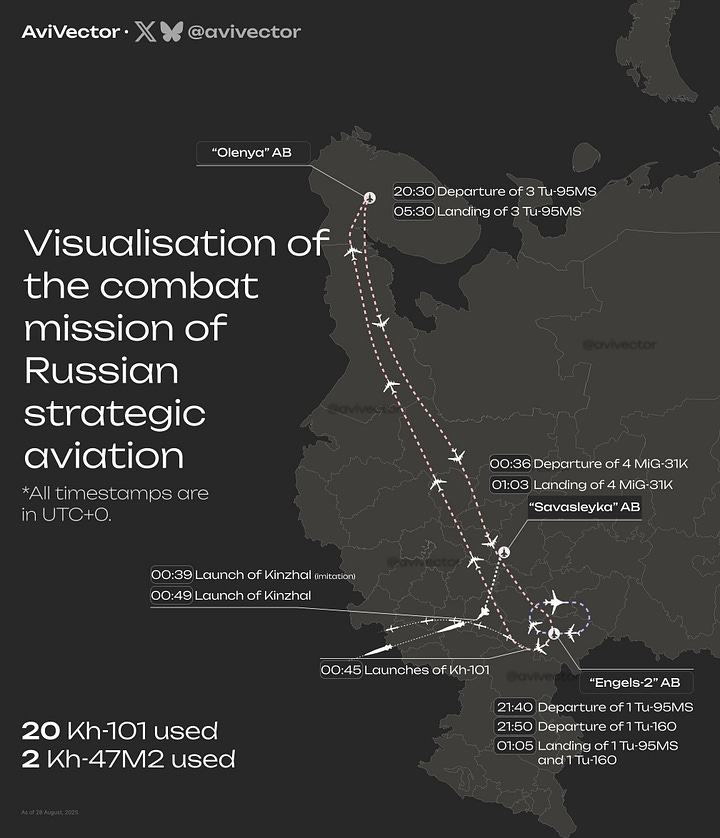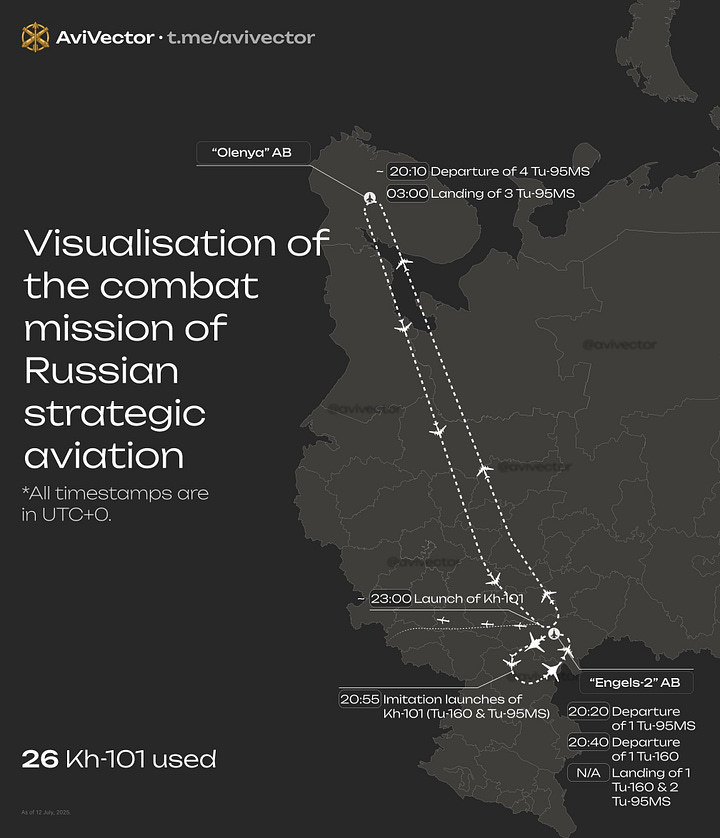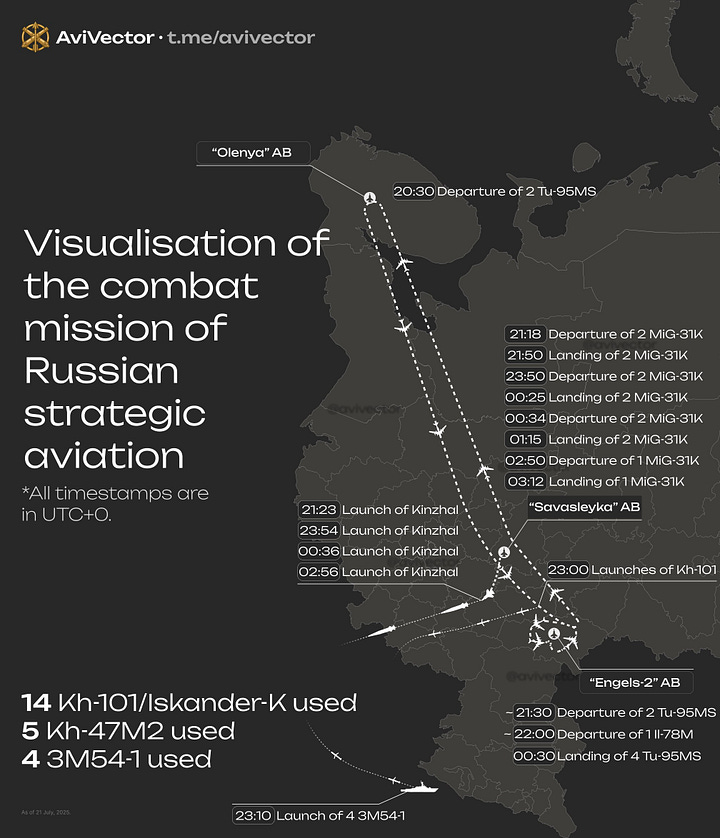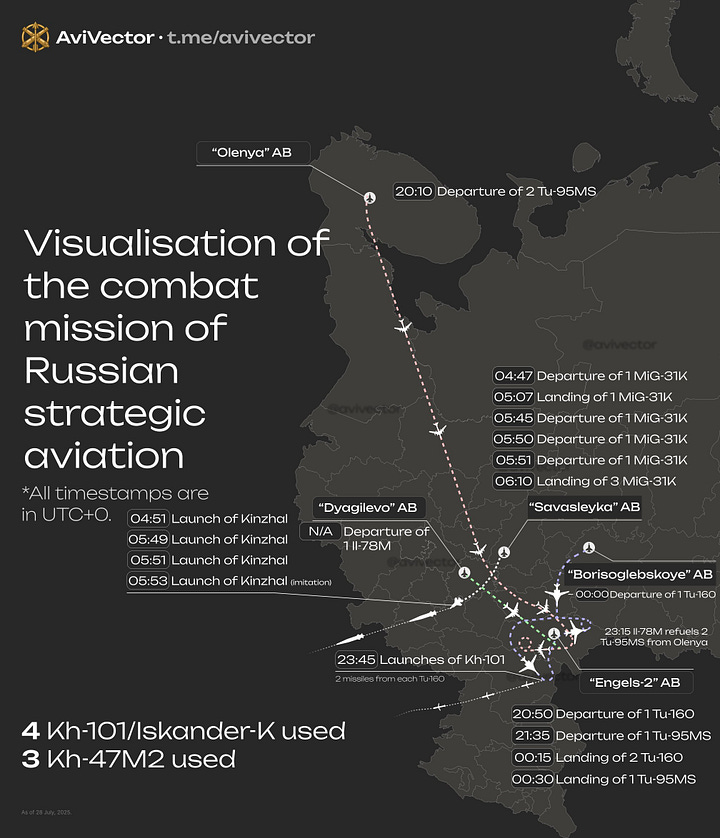Ukrainian Disclosures, Unofficial Maps, Illustrate Inefficiencies Of Russian Bomber Operations
🇷🇺 🇺🇦
Note: The following text was originally posted on my X/Twitter account.
These maps from Twitter user @avivector help to visualize how Russia is employing its bomber aircraft to launch land-attack cruise missiles against Ukraine. All things considered, this amounts to a very inefficient approach to employing long-range bomber aircraft and long-range air-launched land-attack cruise missiles. While a war with Ukraine is not the scenario for which Russian bombers and air-launched cruise missiles were originally developed and deployed, neither the aircraft nor the munitions are optimized for use against such a proximate target. Ukraine's territory is no more than ~1300 kilometers wide, and Kyiv—the target for so many Russian munitions, including air-launched cruise missiles—is just located 200-300 kilometers from the closest sections of the international border.




As the qualitative and quantitative aspects of the threat posed by Ukrainian strike munitions—primarily long-range propeller-driven fixed-wing strike drones and cruise missiles notwithstanding the spectacle of Operation Spiderweb on 1 June 2025—increased over time, the Russian Air Force has not only been forced to shuffle its bomber aircraft around its disparate few airbases suitable for supporting bomber aircraft but to concentrate large numbers of bomber aircraft at Olenya airbase, which is located in the Kola Peninsula near the Barents Sea. Olenya airbase is located some 1400 kilometers from the nearest section of the Russia-Ukraine international border. Given this distance and the Russian Air Force's regular practice of launching land-attack cruise missiles from bomber aircraft in an area that is situated some 2400 kilometers from Olenya airbase (see maps), Russia's finite number of operational bomber aircraft are steadily accumulating unnecessary flight hours, and the bomber aircraft fleet is likely experiencing increasing serviceability and readiness challenges.

